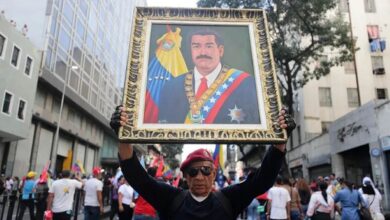Pemex study details ‘severe’ air quality impact from Mexican refinery
Listen to this article
Lopez Obrador has said the facility would help Mexico wean itself off its growing reliance on fuel imports, the vast majority of which come from U.S. refiners

A flagship refinery planned by Mexican President Andres Manuel Lopez Obrador would have a "severe" impact on air quality and emissions could spread to nearby towns, according to an environmental study produced by state oil company Pemex and reviewed by Reuters.
Leer en español: Pemex revela que refinería mexicana amenaza la calidad del aire
Large portions of the environmental impact assessment, which includes hundreds of pages of technical language, were blacked out in more than a dozen documents uploaded to a government website. However, Reuters was able to view an unredacted version.
The report drafted by Petroleos Mexicanos, as Pemex is officially known, was submitted on June 12 to Mexico's oil industry environmental regulator ASEA, which has about three months to review it.
ASEA, whose director is a presidential appointee, could agree with Pemex's findings or it could come to a different conclusion and then order changes to reduce the environmental impacts.
Pemex declined to comment. It referred questions to the energy ministry, which did not respond to messages seeking comment.
The $8 billion refinery, to be located in the Gulf Coast port of Dos Bocas in Lopez Obrador's home state of Tabasco, was a signature campaign promise of the left-leaning energy nationalist.
Lopez Obrador has said the facility would help Mexico wean itself off its growing reliance on fuel imports, the vast majority of which come from U.S. refiners.
In a summary of the report made public, Pemex's overall environmental impact assessment was positive. It determined the refinery would moderately affect the environment but emphasized that those impacts "will be controlled, mitigated or compensated."
The redacted sections of the document showed that, while most environmental impacts were deemed to be moderate, a "severe" impact was expected on air quality once operations started at the refinery, which is expected to process up to 340,000 barrels per day of heavy crude oil.
The assessment said the estimated emissions of nitrogen oxides, carbon monoxide and sulfur dioxide "do not exceed the limits" set out under Mexican law.
Total emissions from the project would average 4,505.1 kilograms per hour (kg/h) of nitrogen oxides, 10,770.8 kg/h of carbon monoxide and 62,670.5 kg/h of sulfur dioxide, the redacted sections of the document said. The document does not provide comparisons to existing refineries of a similar size.
Also read. Amazing! Fuel made of air and sunlight
RANGE OF POLLUTANTS
Daniel Basurto, head of the Mexican Academy on Environmental Impact research institution, described the estimated emissions as containing "high levels" of air contaminants.
He noted the emissions assessment is largely based on data from Pemex's inland Tula refinery, which features very different atmospheric conditions than the coastal Dos Bocas site, meaning that expected emissions could be very different.
Basurto said ASEA should require Pemex to provide more and better data, adding that he has confidence Luis Vera, the Lopez Obrador-appointed ASEA chief, will run an independent process.
The redacted sections of the report said that if the refinery goes into operation, the carbon monoxide would extend over a nearly 15-square-mile (38-square-km) area, while the sulfur dioxide would spread over 43 square miles (112 square km). The latter figure is well within the range of the Tabasco state capital of Villahermosa.
An ASEA spokesman, who asked not to be identified due to the regulator's press policy, said that Pemex had itself determined what it considers confidential about the refinery. He added that the facility's environmental footprint should not be kept from the public.
In a statement on Tuesday, ASEA said it could oblige Pemex to make more information public from the assessment to promote "maximum transparency."
Reuters | David Alire Garcia





